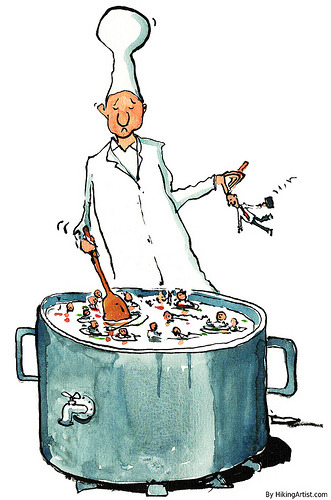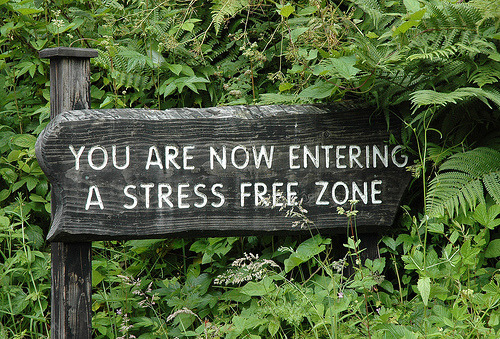When it comes to project management, it’s so much cheaper to learn from someone else’s mistakes. So here are a few of mine!
I’ve been running projects for my whole adult life. I started with computer games at IG. After ten years I switched to marketing and copywriting projects at Articulate Marketing, which I still run. On top of that, I’m now also CEO of Turbine, an online app for purchases, expenses, time off management and HR record-keeping.

Photo: Frits Ahlefeldt-Laurvig
Project management is the art, craft and science of getting stuff done by teams. And it’s also like walking through a minefield. These tips – based on my own experience over 20 years – will help you find your way through it.
1. Hire slow, fire fast.
My first boss advised me not hire one person until I needed two of them. I ignored that advice at IG and probably hired too many people too quickly. Some were amazing but a few were amazingly awful. My experience was that the handful of underperforming staff took up more time and energy than the vast majority of good people. The big lesson is to spend more time developing the good people than correcting the bad ones. If necessary, this means firing poor performers who can’t or won’t improve.
In my case, after I sold the games company, I kept things small using contractors, freelancers, and outsourcing and only recently have I begun to hire full-time employees again. I’ve made more money, and I’ve been far happier with the new, slow-but-steady approach. My first boss was right.
2. Every new relationship needs a honeymoon.
The human aspect of project management is vital, especially for long-distance relationships like the one I have with my Turbine development team. We had a bit of a rocky patch last year because I forgot that they were people and focused too hard on the product and my concerns about it. Today, things are much better because we have more regular contact and, more importantly, we try to talk more about ourselves and share a bit of water-cooler gossip.
Even for virtual teams, there are plenty of things you need to do to start the relationship in the right way: such as meeting regularly in person, setting clear expectations and using the right tools (we like Basecamp and, naturally, iDoneThis).
3. Understand incentives.
Having paid hundreds of thousands of pounds in financial incentives over the years, my experience is that they are mostly worthless. Why? At best they motivate people to work more hours for a short period of time. At worst, they are taken for granted (which has no benefit at all) or unobtainable (which is actually demotivating).
Find other ways to motivate your staff: set worthwhile goals, give team members respect and autonomy, and create a feeling of belonging to a team with a mission. Maslov’s hierarchy of needs is an essential guide into human motivation. Also, give people a good, productive working environment. Read Peopleware. Don’t fall prey to productivity myths.
4. See eye to eye with the client.
Most of the time, when a project goes badly wrong it’s because of a fundamental flaw in communications with the client. With projects, like software development, that are likely to have changing requirements, the key is to talk often, expect changes and plan for them. With creative projects it’s best to spend the time up front talking to and questioning the client until you arrive at a good, mutually understood brief.
My experience has also taught me two fundamental lessons about client communication: first, sometimes the best kind of conversation is a question, not a statement. Second, sometimes the best answer is no answer. When Kennedy got a belligerent message from Khrushchev during the Cuban missile crisis, followed quickly by a more conciliatory one, he ignored the first and responded to the second. Do likewise!
5. Change is cheaper at the beginning.
“Wrong decisions made early can be recovered from. Right decisions made late cannot correct them,” according to NASA Project Management Guidelines. Watch out for the 12 danger signs that your (writing) project is set up for failure (for example, too many meetings and not enough action), embrace confrontation, and make tough decisions early on. Early prototypes are very valuable for flushing out problems. Remember, it’s easier to change a sketch than recode a user interface.

Photo: thornypup
6. Bugs are inevitable.
Every project has bugs. When I got married, my friend Sophie said, “Three things will go wrong. Don’t worry about them.” This is great advice: bugs don’t cause stress; your reaction to them does.
So if you can accept the inevitable hiccups, even plan for them and agree how you’ll deal with difficulties up front, you’ll have a more successful project. This means going beyond a diagnosis of the individual problem, figuring out why the problem arose and adjusting your processes and systems to avoid that type of problem occurring again.
7. Know when to give up.
I have shut down three big projects in my life. At the time, the decisions were difficult and painful. Looking back, in every case, it was the right decision because it freed me to do something better. One of the arts of managing projects (as opposed to project management) is knowing when to kill them. Google is good at this. They cull stuff all the time. But W.C. Fields said it best: “If at first you don’t succeed, try, try again. Then quit. There’s no point in being a damn fool about it.”
8. Make tea, not war
As the project’s manager you are the lynchpin, so be a friend to your emotions and stay sane. Over the past few years, I’ve realised that my time is more valuable than my money. You only have so many days in your life, spend them on projects that make you happy, better and richer. (Or reading my Devil’s Project Management Dictionary!)
And when I have a problem that’s stressing me out, which is inevitable from time to time, I find that a nice cup of tea is the universal solvent. Try it!

